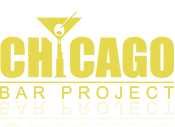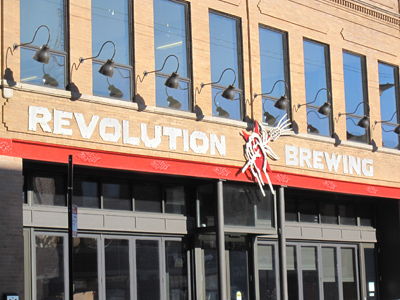
Gourmet Food, Craft Beer & Fine Spirits: Your Definitive Guide to the New Tavern
Skip to the List: Gastropubs, Gastrolounges & Gastroraunts
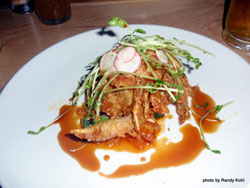 When it comes to upscale cuisine, the once clear distinction between restaurants and bars is increasingly blurred. The change has been evolutionary and revolutionary, as a rising tide of gastropubs and their cousin gastrolounges have altered how Chicagoans spend a night on the town. Where potato skins, buffalo wings and quesadillas once reigned, many now feature gourmet dishes like roasted bone marrow with onion jam or seared maple leaf breast of duck with crisped curry polenta—a quality of food that rivals some of the best restaurants. Additionally, MGD and shots of Jagermeister are out, while seasonal craft beers and small-batch whiskeys are in. Many have bemoaned the decline of the corner tap as a type of establishment once numbering 15,000 in the city but whittled down to 1,500 today. However, for a number of reasons that have spawned the gastropub that we will explore below, the “Taverning of Chicago” has only just begun…
When it comes to upscale cuisine, the once clear distinction between restaurants and bars is increasingly blurred. The change has been evolutionary and revolutionary, as a rising tide of gastropubs and their cousin gastrolounges have altered how Chicagoans spend a night on the town. Where potato skins, buffalo wings and quesadillas once reigned, many now feature gourmet dishes like roasted bone marrow with onion jam or seared maple leaf breast of duck with crisped curry polenta—a quality of food that rivals some of the best restaurants. Additionally, MGD and shots of Jagermeister are out, while seasonal craft beers and small-batch whiskeys are in. Many have bemoaned the decline of the corner tap as a type of establishment once numbering 15,000 in the city but whittled down to 1,500 today. However, for a number of reasons that have spawned the gastropub that we will explore below, the “Taverning of Chicago” has only just begun…
A Brief History
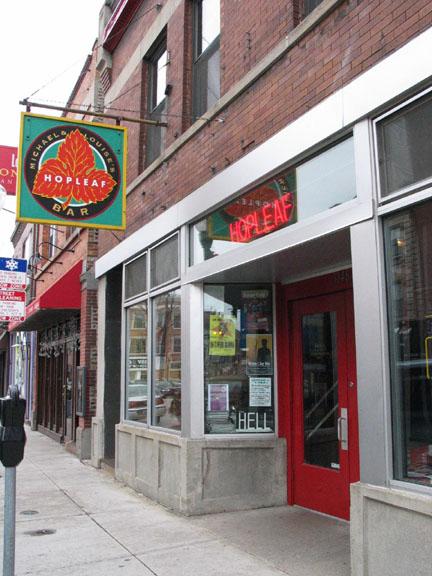 Upon first encounter, the word gastropub seems a bit unpleasant, conjuring visions of communal jars of pickled eggs that were once common in bars and a common source of gastroenteritis. But the term is actually a fusion of “gastronomy” and “Public House,” or pub, purportedly first coined in 1991 to describe London trendsetter, The Eagle. More specifically, a gastropub is a bar which pairs a thoughtful beer selection with a gourmet-inspired menu, served in a casual, often rustic setting until the wee hours (2am/3am Saturday). A gastrolounge by contrast, loses the focus on beer in favor of wine, cocktails and hard-to-find spirits served within a swankier atmosphere also open late.
Upon first encounter, the word gastropub seems a bit unpleasant, conjuring visions of communal jars of pickled eggs that were once common in bars and a common source of gastroenteritis. But the term is actually a fusion of “gastronomy” and “Public House,” or pub, purportedly first coined in 1991 to describe London trendsetter, The Eagle. More specifically, a gastropub is a bar which pairs a thoughtful beer selection with a gourmet-inspired menu, served in a casual, often rustic setting until the wee hours (2am/3am Saturday). A gastrolounge by contrast, loses the focus on beer in favor of wine, cocktails and hard-to-find spirits served within a swankier atmosphere also open late.
A true gastropub is also just that: a pub. Come for the food, stay for drinks and conversation—or a bit of craic, as the Irish say. Several establishments without tavern licenses have adopted the gastro-guise, but are simply sheep in wolves clothing—particularly with having to make a reservation weeks in advance (or face two-hour waits), no chance to linger over drinks, and a selection of beers that cost more per bottle than your entree. (We’re looking at you Publican and Girl & the Goat.)
Several sources point to the 2004 opening of The Spotted Pig in Manhattan’s West Village as the first gastropub in the U.S., but Chicago’s own Hopleaf predates that by at least six months, with 41 Belgian beers on tap, another 260 craft brews and imports and bottles, and having obtained their restaurant license in 2003. Hopleaf today serves such Belgian delicacies as steak frites, veal sweetbreads and the city’s best mussels—made with your choice of Wittekerke white ale (recommended) or white wine.
Evolving Tastes
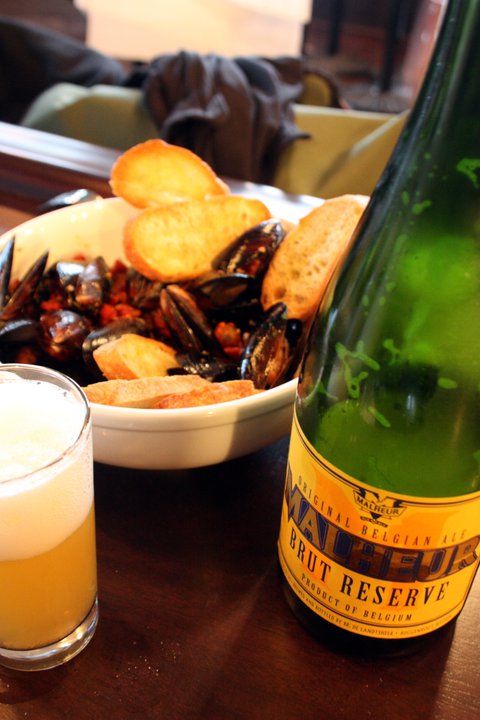 In the early 2000s, it became virtually impossible to acquire a simple tavern license in the “regentrified” neighborhoods of Chicago (i.e. Lincoln Park, Lakeview, Wicker Park), thanks to Mayor Daley who all but declared war on the Chicago bar. This required that almost every new bar open with a kitchen. Not only did this make it much more difficult and costly to open a new place, but also pub owners will tell you that the kitchen is the hardest part to get right. Only a few, like the dearly departed JT Collins, had the foresight to hire an executive chef to create their menu back then so we had to suffer through poor quality pub grub for years.
In the early 2000s, it became virtually impossible to acquire a simple tavern license in the “regentrified” neighborhoods of Chicago (i.e. Lincoln Park, Lakeview, Wicker Park), thanks to Mayor Daley who all but declared war on the Chicago bar. This required that almost every new bar open with a kitchen. Not only did this make it much more difficult and costly to open a new place, but also pub owners will tell you that the kitchen is the hardest part to get right. Only a few, like the dearly departed JT Collins, had the foresight to hire an executive chef to create their menu back then so we had to suffer through poor quality pub grub for years.
These days, everyone’s a foodie, oenophile, beer connoisseur, locavore, pescavore, or all of the above. Blame it on the increased availability of exotic and organic ingredients, a greater awareness of sustainable dining practices or the rise of the “celebrity chef” spurred on by reality cooking shows such as Hell’s Kitchen and Top Chef. Whatever the case, our tastes have evolved and become more sophisticated. Yet, seven-course, $135 prix fixe dinners—wine pairing not included—aren’t part of most of our everyday menus. This has created a demand for don’t-try-this-at-home cooking that avoids the trappings of fine dining, and gastropubs have filled the void admirably. It turns out people are more than willing to give up tablecloths and over-dressed waiters in exchange for high quality food served at half the price and pretension. The resulting competition has elevated the quality of food served in all watering holes, citywide.
These gastropubs and gastrolounges are also starting to rival the best traditional restaurants in town. Places like The Gage and Gilt Bar have received stellar reviews any bistro would envy. In fact, Logan Square’s Longman & Eagle was recently awarded one Michelin star, among only a handful of Chicago dining establishments to win this distinction and a feat almost unheard of for a bar.
Live Better, Drink Better
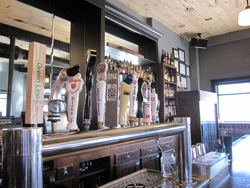 At the same time, our desire for “affordable luxury” has led many to reach the conclusion that, “life’s too short to drink crappy beer.” Craft beers have grown in popularity so much that American microbrewers struggle to keep up with demand, while the mass-market brands watch their market share fizzle like beer foam in a dirty mug. This ties in perfectly with the gastropub trend, having been realized in the likes of Revolution Brewing, which crafts their own lagers and ales, Fountainhead and Paramount Room with their selections of rare Belgian ales and American barley wines, and Owen & Engine who utilizes hand-powered taps (i.e. the “engine”) to draw beer from casks in the cellar. While Quenchers was the first beer bar in Chicago, having opened in 1979 and now featuring over 260 beers, Hopleaf carries the most varieties with over 300 in addition to being the country’s first gastropub.
At the same time, our desire for “affordable luxury” has led many to reach the conclusion that, “life’s too short to drink crappy beer.” Craft beers have grown in popularity so much that American microbrewers struggle to keep up with demand, while the mass-market brands watch their market share fizzle like beer foam in a dirty mug. This ties in perfectly with the gastropub trend, having been realized in the likes of Revolution Brewing, which crafts their own lagers and ales, Fountainhead and Paramount Room with their selections of rare Belgian ales and American barley wines, and Owen & Engine who utilizes hand-powered taps (i.e. the “engine”) to draw beer from casks in the cellar. While Quenchers was the first beer bar in Chicago, having opened in 1979 and now featuring over 260 beers, Hopleaf carries the most varieties with over 300 in addition to being the country’s first gastropub.
 Gastrolounges have benefited equally from the resurgence of the classic cocktail. Originally invented to mask the horrible taste of prohibition-era moonshine, cocktails have risen to a near art form in the hands of skilled mixologists—the bar-side counterparts to executive chefs—offering an equal emphasis on food in drink exemplified by places like Sable Kitchen & Bar. Violet Hour deserves a special mention here with its unique speakeasy atmosphere and some of the most inventive cocktails and finest ingredients in the city. Violet Hour’s minimal selection of small plates places it just outside of the gastrolounge category, but it has had a significant influence on the opening of new gastrolounges like Sable, particularly as new lounge owners have recruited Violet Hour bartenders to come and work for them. Additionally, the wine bar is a sort of predecessor to the gastrolounge, as they often serve gourmet small plates and are open late, but are considered a category all to their own for the purposes of this guide.
Gastrolounges have benefited equally from the resurgence of the classic cocktail. Originally invented to mask the horrible taste of prohibition-era moonshine, cocktails have risen to a near art form in the hands of skilled mixologists—the bar-side counterparts to executive chefs—offering an equal emphasis on food in drink exemplified by places like Sable Kitchen & Bar. Violet Hour deserves a special mention here with its unique speakeasy atmosphere and some of the most inventive cocktails and finest ingredients in the city. Violet Hour’s minimal selection of small plates places it just outside of the gastrolounge category, but it has had a significant influence on the opening of new gastrolounges like Sable, particularly as new lounge owners have recruited Violet Hour bartenders to come and work for them. Additionally, the wine bar is a sort of predecessor to the gastrolounge, as they often serve gourmet small plates and are open late, but are considered a category all to their own for the purposes of this guide.
 In addition to better quality beer, many gastropubs and gastrolounges also feature small-batch whiskeys once hard to find even in the best liquor stores. In 2010, Sable Kitchen & Bar and Fountainhead have both overtaken Duke of Perth with the largest selection of single-malt Scotch (80). Duke of Perth held this distinction for over 20 years but Sable offers 121 and Fountainhead 82. Longman & Eagle features 160 types of whiskey, 37 of which are available for a most economical $3. What Michelin star recipient anywhere in the world can claim the same? While they carry a larger selection overall, Delilah’s doesn’t serve food and Twisted Spoke serves more bar & grill fare—though much better than the average bar.
In addition to better quality beer, many gastropubs and gastrolounges also feature small-batch whiskeys once hard to find even in the best liquor stores. In 2010, Sable Kitchen & Bar and Fountainhead have both overtaken Duke of Perth with the largest selection of single-malt Scotch (80). Duke of Perth held this distinction for over 20 years but Sable offers 121 and Fountainhead 82. Longman & Eagle features 160 types of whiskey, 37 of which are available for a most economical $3. What Michelin star recipient anywhere in the world can claim the same? While they carry a larger selection overall, Delilah’s doesn’t serve food and Twisted Spoke serves more bar & grill fare—though much better than the average bar.
Thank You, Jimmy
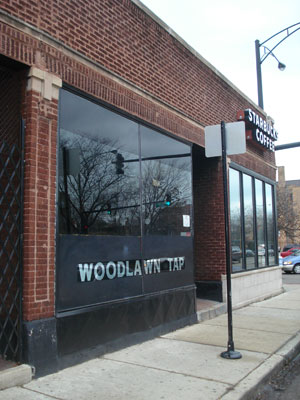 Chicago’s smoking ban went into effect January 1, 2008, thanks in large part to the Woodlawn Tap, known to its Hyde Park clientele as “Jimmy’s” in honor of the bars long-time proprietor, Jimmy Wilson. According to Sean Parnell, creator of Chicago Bar Project and author of Historic Bars of Chicago, “The Sun-Times surveyed the air quality according to EPA standards in the smokiest Chicago restaurants and bars and found Jimmy’s Woodlawn Tap to be the worst. Patrons had always claimed that the bar was smoky, but no one realized that it was equivalent to breathing in the air following a volcanic eruption.”
Chicago’s smoking ban went into effect January 1, 2008, thanks in large part to the Woodlawn Tap, known to its Hyde Park clientele as “Jimmy’s” in honor of the bars long-time proprietor, Jimmy Wilson. According to Sean Parnell, creator of Chicago Bar Project and author of Historic Bars of Chicago, “The Sun-Times surveyed the air quality according to EPA standards in the smokiest Chicago restaurants and bars and found Jimmy’s Woodlawn Tap to be the worst. Patrons had always claimed that the bar was smoky, but no one realized that it was equivalent to breathing in the air following a volcanic eruption.”
Critics warned the ban would spell doom for the traditional Chicago bar. They were right. Gone are the days when bars can rely on faithful regulars putting in eight-hour shifts on their favorite stool. This has literally cleared the air and forced a change of strategy for any would-be bar owner. It’s also created a pleasant side-effect: bars have become accessible to a whole range of new clientele. Women are increasingly attracted to gastropubs and gastrolounges because they no longer fear leaving with hair and clothes smelling like an ashtray at a downtown Vegas casino after 10 minutes, and their more discriminating palates are satisfied by the upscale board of fare. And with so many young professionals living in the area, a smoke-free atmosphere with fine food & drink also appeals to those with small children before they make their required exodus to the suburbs. Thus, tables are filled by day with families, in early evening with couples, and at night with those seeking after-dinner drinks and perhaps more than just culinary sustenance… While the focus may now be more on turning tables than turning coasters at Chicago bars, the goal is still the same—to create an experience that will drive repeat business and they’ve done just that.
The Taverning of Chicago
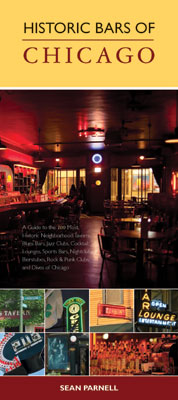 With the emergence of the gastropub, bars across the city have become more tavern-like, creating a new generation of all-inclusive neighborhood gathering places that are a far cry from the homogenous, male-dominated pubs of the not-too-distant past. Gastropubs dovetail perfectly with our changing tastes and demographics, operating in that gray area between restaurant and bar. And by offering the best of both worlds, gastropubs have quickly gone from concept to mainstream, changing the entire bar scene for the better.
With the emergence of the gastropub, bars across the city have become more tavern-like, creating a new generation of all-inclusive neighborhood gathering places that are a far cry from the homogenous, male-dominated pubs of the not-too-distant past. Gastropubs dovetail perfectly with our changing tastes and demographics, operating in that gray area between restaurant and bar. And by offering the best of both worlds, gastropubs have quickly gone from concept to mainstream, changing the entire bar scene for the better.
According to Parnell, “Chicago bars are becoming more like the taverns of our grandparents’ generation. Much like you’ll still find in Ireland and the UK, our pubs are once again appealing to all with fine food, quality drink and a smoke-free atmosphere—though with one major improvement: in bygone days, the tavern’s clientele reflected the ethnic profile of the neighborhood and were largely unwelcoming to outsiders. Today, gastropubs and gastrolounges are opening all over town, encouraging both residents and visitors to explore the city’s rich tapestry of neighborhoods, particularly lesser known places like Andersonville, Logan Square, Noble Square, and River West.”
The List
While the following unscientific list is guaranteed to change, here is a comprehensive list of Chicago’s gastropubs, gastrolounges and “gastroraunts”:
